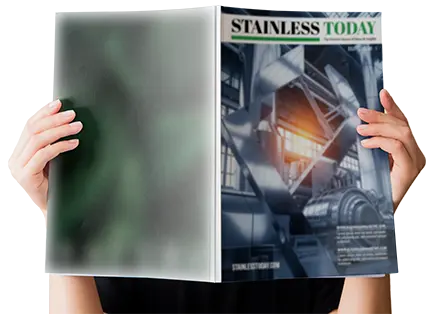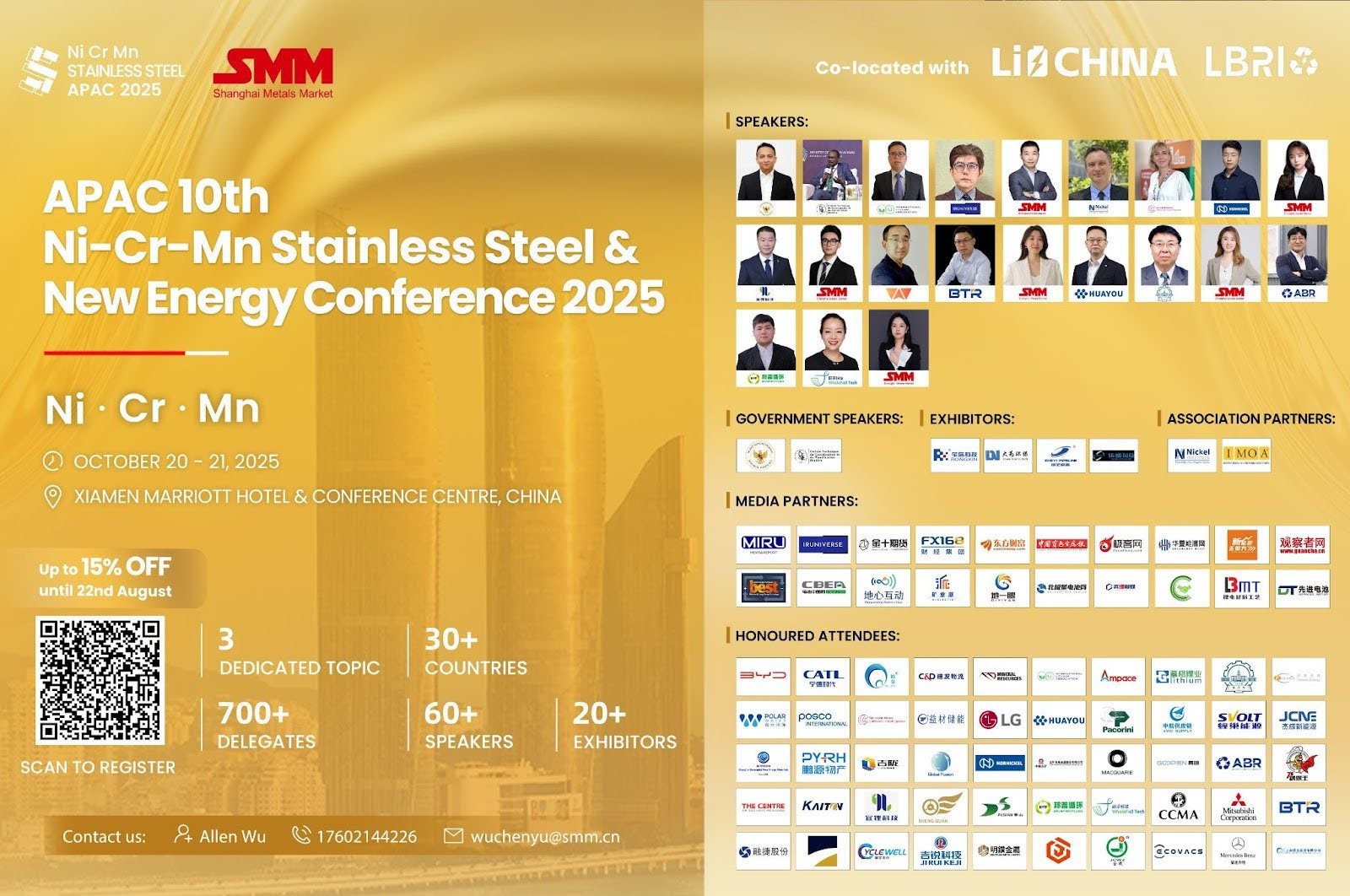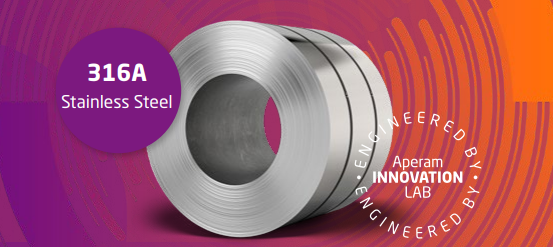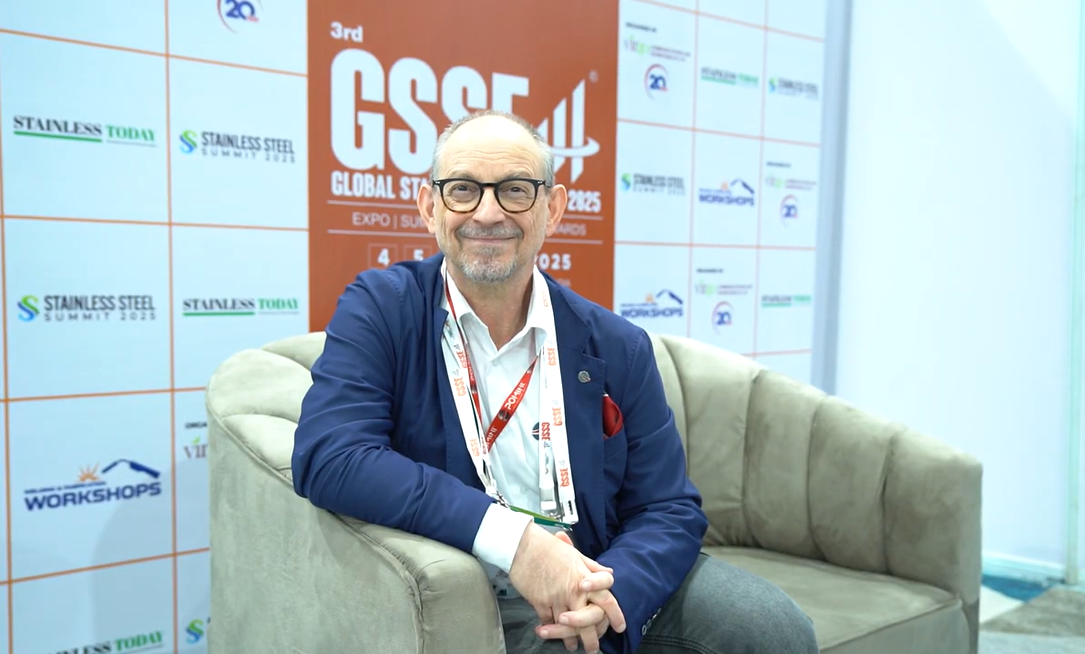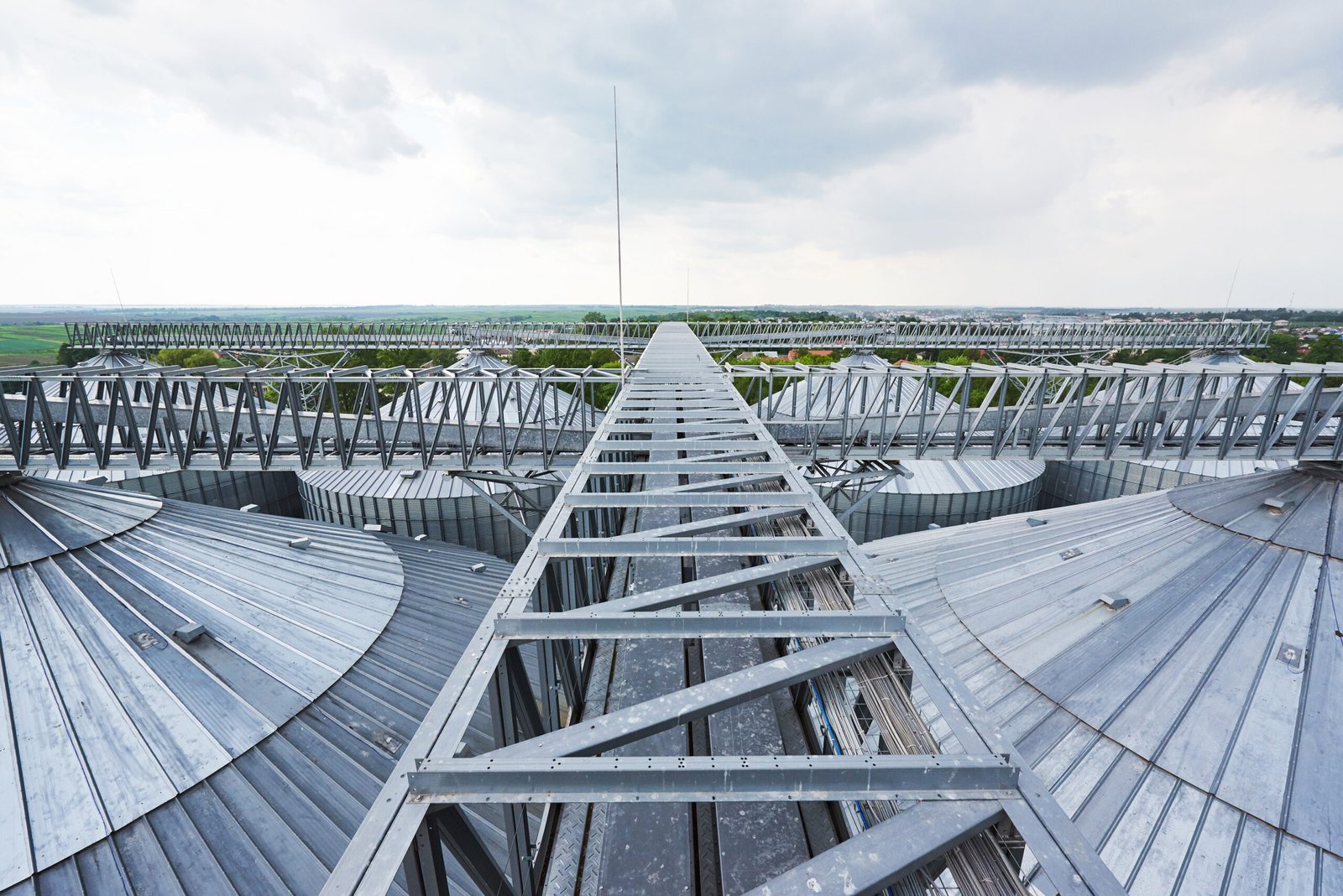Mr. Nagendra Says: Driving Stainless Steel Growth Through Innovation, Market Expansion, and Standardization

Mr. Nagendra Vijayvargia: A Driving Force Behind Stainless Steel Growth in India. With decades of expertise, he has pioneered market expansion, innovation, and standardization. His leadership has shaped the industry’s trajectory, making stainless steel a cornerstone of modern infrastructure.
Mr. Nagendra, a seasoned metallurgical engineer, has played a pivotal role in India’s stainless steel industry. With a distinguished career at SAIL spanning over four decades, he has expertise in quality assurance, marketing, and industry standards. Currently, he serves as a consultant with the Indian Steel Development Association, driving innovation and policy advancements.
Q1) Tell us about your current work profile and your past experience.
Ans. Currently, I am a consultant with the Indian Steel Development Association. And I have retired from Steel Authority of India Limited. I had joined SAIL just a few months or maybe nearly one year after graduating from Malaviya Regional Engineering College as a metallurgical engineer. And for one year, one campus interview was there. So, I joined one company there and then SAIL. And since 1979, I was with SAIL till retirement. And had experience in different departments. Had training in Rao Kailash Steel Plant. Then know-how training from the know-how supplier of Salem Steel Plant from France. And then in the Metallurgical Services Department, they used to call it. This department was responsible for quality assurance, quality control, and any local R&D within the plant. So, I was in Quality Assurance, Quality Control, and then ISO 9000. Later on, I had a small instinct at Salem Steel Plant, Durgapur. Because Durgapur started making steel slabs for Salem Steel Plant. At that time, Salem Steel Plant did not have a melting facility. Then, I also had a small instinct in the Executive Director’s Secretariat as his technical assistant. So, I was heading his secretariat. So, there I got experience in different departments because all departments were reporting to him. So, Finance, HRs, Administration, and of course, Operations, and all that. So, after retirement, and then of course, after the Executive Director’s office, I went to Sales and Marketing. So, a long instinct in sales and marketing of Salem Steel. And after retirement, I joined ISTA. I am a consultant on a more or less case-to-case basis. But of course, one case is going on that developing stainless steel standards with BIS. So, I am representing the stainless steel industry in certain committees of BIS. So, in that committee, we made two new stainless steel pipe and tube standards. I was the convener of that committee. And one totally refurbished. And this refurbishment is for pipes and tubes for the food, beverage, and dairy industries. And that has been made; it has been brought to QCU. Quality Control Order.
Q2) What is your perspective on the current trends in the stainless steel market in India?
Ans. The stainless steel market in India is developing fast and will also develop in the near future; this is my view. Stainless steel demand has been increasing in India for so many years, more or less equal to GDP. It is following the GDP trend of India, and with a target of a 5 trillion economy, definitely its GDP is also going to increase, and so the stainless steel market is also going to increase. If you see the per capita consumption in the world, the average is more than 6.5 or so, and in India it is nearly 3 or 3.2; different figures are there. So if India has to become a developed nation, it has to come to at least the average of the world. So it will become nearly double if everything goes as planned.
Q3) How has the market strategy for stainless steel evolved during your tenure?
Ans. If you ask me right from the beginning of my career, at that time, hardly any organised company was producing stainless steel in India. Mostly it was imported, or it was an organised sector. MSME was making stainless steel. So when they were importing, the means of import were also restricted. So only retailers or stockists were importing. Or the MSME was supplying this. So when Salem Steel started producing stainless steel, at that time, hardly any consumers were purchasing directly. So they were targeting the retailers, the stockists. And slowly they started; they developed their own because Salem Steel also was new in the business. So they developed their own strategy. First they started targeting the retailers. They started giving bonuses to them for quantity-based bonuses. And so slowly they started targeting the actual users, consumers. There the utensil sector was the highest consumer at that time. Of course now also the highest consumer is utensils for stainless steel. However, there was a very large portion that was there in total demand. So the utensil sector was targeted. Then Salem Steel started making its own dinner set also as a consumer awareness. That this is how it looks and how it behaves, how it performs. Because they were making of 304 only. Very later on, very late, when nickel prices went up very high. So we can say kudos to the stainless steel industry in India that they developed the 200 series where nickel was very low. Because stainless steel was known as non-magnetic steel. So if you start using 430 grade, which is magnetic. Which does not have any nickel. So people will say that it is not stainless steel. Especially for utensils, household utensils. So they made, the stainless steel industry in India made 202. They used to call it 202, but it was not exactly 202. Varying grade, varying percentage of nickel they developed. Then they started supplying utensils to those grades, utensil manufacturers. Slowly these grades came because by the time they developed these grades, they also had better properties. So slowly it went into fabrication also, where corrosion was not very severe. Of course the look was very good just like any other grade. But corrosion resistance is less in 200 series grades. Then apart from that we started targeting bulk producers and bulk users like railways. We started educating these companies like railway. So railway started, we developed a grade for railway waggons. People were not knowing how to weld stainless steel. So as a part of the marketing strategy we trained the people, the users, welders. The welders in the user’s company. How to weld stainless steel, how to fabricate stainless steel. And then railways started using stainless steel in wagons. Then a particular grade was developed for that purpose. And the same grade was used for coal bunkers in thermal energy. Then we developed a grade for the chemical industry. At that time only 304 grade was there. Then we started making 316L, 310 for high temperature, and 316L. Chemical industry, textile industry, where 316 was required. Then 430 grade was developed for appliances, washing machines, and microwaves. There are 430 grades, which are magnetic; it doesn’t matter. I mean, sometimes magnetic properties are also required. But an aesthetic look is required; corrosion resistance is required. So there 430 grade is there. Then we coordinated with the Government of India, Mint. They started using coins for 430, I mean 430 grade coins for stainless steel. Then slowly it went to the branding. As I told you, the stainless steel started making their dinner set. And other companies like Chintra also started making their own architectural applications. They started making, I mean, they did not cater to entire industry But they showcased the thing that stainless steel can be used for such applications. So the purpose of making their own dinner set or their own architectural thing was not to cater to the entire industry. It was a kind of showcase marketing strategy. And of course then came slowly to bridges and wire roads and reinforcement bars. But reinforcement bars, you know, structures, etc., are being used. But many government companies will not use it without a standard. So as a marketing strategy, we went to BIS and made BIS standards for various applications. Even normal sheets and coils hardly had 3-4 grades in BIS standards. So as late as 2017, it was so late that so many grades, now nearly 100 grades, are there in the BIS standard. Then a standard was developed for rebars for stainless steel. So that government agencies can use stainless steel for rebars. And now, as I told you, through ISDA we have developed pipes and tubes standards for stainless steel. So that all agencies can use pipes and tubes, I mean stainless steel. So these are also part of the marketing strategy that we make popular. So I must say you have been very instrumental in bringing stainless steel to where it is today.
Q4) Because you have covered almost all types of stainless steel and brought them to the forefront of all the sectors. So now they have a wide variety of choices. They can choose the application as per their requirement.
Ans. Yes, stainless steel can be used in all sectors wherever steel is there. And of course the demand for corrosion resistance and heat in higher temperatures. And of course, where looks matter, it should look good. The painting will not be required. Painting will not be required. And wherever painting is difficult, again stainless steel is used. Now a lot of, in India also some bridges, they have started using stainless steel rebars. And especially in the splash area, you can use stainless steel rebar. You need not replace the entire empty bars with stainless steel. Just on the splash area or the difficult areas where you can reach with difficulty or repair is difficult later on in the future. There you use stainless steel.
Q5) What role does product development play in staying competitive in the stainless steel industry? How do you appreciate it for new sectors?
Ans. Product and market development, of course, is a very important aspect of this because stainless steel is a very new alloy, just above some 100 years old in the world, and in India, it is comparatively much newer. Earlier only utensils were being used of stainless steel. I am talking about 40-50 years back; everything was imported, and only utensils were there. Later on, different grades were used, and a special finish was developed, like what we can say for decorative applications. If you see the lifts, different lifts are there; you can see different applications. It is only a number 4 finish we call technically, but you can say it is an emery finish. In emery paper, if you rub, that finish is there. We started that; later on, we saw that people used to scratch it, and then scratch-resistant finishes were developed. Slowly these things were developed. Then reduce the weight of metro coaches; we started using quarter-hard, half-hard, and full-hard stainless steel. So stainless steel, as such, in the initial condition, is used generally, but if you use quarter hard, etc., hardness starts, and you can reduce the thickness of the material. So it becomes lightweight, and metros need to be very lightweight because they have to accelerate very fast and also stop very fast. So it has to be lightweight compared to other railways. So as I told already that for waggons 409 grade was developed. Then slowly coaches also started using normal coaches, not metro coaches. So they are different grades, which is competitively, you can harden it faster. So apart from 304, grade 301 was developed. Then the auto industry started using exhaust. In the exhaust, it is completely stainless steel, and especially after the catalytic converter was made mandatory, this stainless steel started its use in the exhaust system for automobiles, and of course, it is heat resistant also. Then brake disc, you know motorcycle brake disc, different grade is developed. Then high sea platforms; there, you know salty water is there. So duplex stainless steel was developed. So in India also duplex stainless steel came very late, but now it is getting nice applications very quickly. Then, as I told you in the beginning, the 200 series was developed. Although the 200 series existed in the international standard, it was developed in India only when nickel became costly. And now slowly in the renewal of energy, stainless steel hydrogen is being used. Buses and trucks are being used. Then aerospace and defence, there is also market development, and product development is going on.
Q6) What are the key challenges in customer relationship management for stainless steel companies?
Ans. Customer relationship is very important, of course. We have to; demand prediction is required. It is very important how much demand we can do and how much, how to develop the customers. Because many customers are new to stainless steel. So the development was made. The import disturbs the domestic market. A lot of import is there. Of course, in late China, there has been dumping. So the anti-dumping duty was there. The government has supported them there. Then logistic issues were there. Supply chain management was important. Now traceability of material; it passes through many hands. Now all users, all fabricators, they don’t require bulk. So the middlemen, retailers, are very important. But many retailers are there. Many hands; it passes through many hands. So the traceability of material is very important. If there is a problem with the end users, then we have to attend to the customer. So traceability is very important. How it was processed and all that. So that challenge was there. Demand prediction, of course, as I told you earlier. Then retailers, the mix-up is there. Mix-ups are there at retailers. Many small retailers don’t bother about traceability. So that is a very challenging thing. Then training was given to many fabricators in India. So welding training. Welding is not the same as mild steel. It is not very difficult, but it is different than mild steel. So training was given to welding. Even as I told you that the coaches and waggons, when stainless steel waggons started making. The waggon manufacturers and welders were trained by the suppliers. You know, the Salem Steel and General Steel. Welders were deployed at the campus of the wagon manufacturers to train them. Because when they were not able to weld, they started doubting stainless steel. That stainless steel is not suitable for their application. Even big players like railways, they were also not able to weld properly. So as I told you, we trained them. Because it is a costly material. Then a small quantity for a specific requirement is also a challenge. Because stainless steel has, although we call it stainless steel, but there are hundreds of grades. And different properties like austenitic stainless steel, martensitic stainless steel, ferritic stainless steel. All require different treatment during fabrication and during processing also. They require different treatment and different fabrication; they require different treatment. And there are hundreds of grades. So this is a big challenge there.
Q7) How does working in SAP contribute to the efficiency of stainless steel operations?
Ans. SAP is good in all aspects of industry. You take stainless steel, carbon steel, or not only steel, but any metal, or forget about metals; any industry, it is good. Even the industry in which you are, like publication or anything, SAP is very important. Of course, SAP is costly, so small players do not apply SAP. But it is very important. If I talk about my industry, the stainless steel industry, initially when we were doing manual operations, data collection, data analysis, financial reporting, and everything, even customer relation management (CRM), everything was manual. Then, chemists settled on PCs. It was, I think, the late 80s when the PC came. Each department was given their own PC. They developed their own programming for each department. So, reporting also started through PC, but it was all separate. Then, SAP came in, and then it was implemented initially in one department, then the operations department, and then the maintenance department. Slowly, it came to finally marketing, their distribution and sales, and distribution and marketing. So, operations were streamlined. The reporting and data analysis were also better. Financial compliance, you know, then customer relation management also became much better enhanced. Cost reduction by reducing waste. Lead time started slowly coming. Because as soon as the marketing or sales department logs in the requirement of the customer, immediately the operation department comes to know. So, the lead period started coming down. Turnover time, inventory control, and everything improved. So, like any other industry, the stainless steel industry also benefitted from SAP. Its traceability of finished material, everything.
Q8) What strategies do you recommend for effective complaint handling in the stainless steel industry?
Ans. Very important point, because stainless steel is a very costly material. If there is a defect, it costs the customer as well as the supplier very dearly. So, immediate customer complaint and immediate tracing of this zero defect are very important there. We have to go to the zero-defect concept. And the complaint handling has to be very quick. So, a dedicated customer service team was required. Initially, I will take an example of a stainless steel sale. But of course, it is applicable for everybody. Tinder also and any other player in the log product also. So, initially we started a dedicated customer service team. And the sales and marketing team was different. Then we integrated them because we trained the engineers in marketing and sales and marketing. So, the engineers can do both together. And then multiple channels for lodging complaints were there. Either you do it orally or by SMS or by text or anything. You will just lodge the complaint. And of course, the CRM system helps them. The SAP system. Then timely response acknowledgement. Then root cause analysis. Everything was required. Data analysis. Then corrective action is required. Complaint handling protocols are required. And postal support is required. So, sometimes the material… Because the fabricators also were new for the stainless steel fabricator. For them, the stainless steel product was new. So, sometimes they also make mistakes. But they will say that it is stainless steel, your product, your problem. So, we used to handle them. That’s why, as I told you, the engineers were inducted in that. So, engineers used to handle this. And they were also trying to find out the problem. So, sometimes the problem is at the customer’s end; we used to handle that also. That this is the problem at the fabrication end or welding end. And for other ways, it may be a material problem. So, we have to give feedback to the plant. So, everything was slowly developed everywhere. Because in India, stainless steel, for producers also, it was a new product.

